Find the best pencils for drawing in this guide.
When it comes to drawing pencils, almost every artist will have a good set of graphite pencils. Whether they are used to sketch out compositions before painting, or as a medium in their own right.
However, there are more varieties of pencils than you may think. In this guide, I’ll run through all the different kinds of pencils, from traditional graphite to watercolour pencils and oil pencils. I’ll explain their uses and the best brands for each type. Take a look at the contents navigation, if you see a section that interests you, skip down to it.
Pencil is a versatile and forgiving medium. It’s often the very first art medium that people experiment with—it’s erasable so it doesn’t matter if you make mistakes. You can create a wide variety of effects—draw in a hyper realistic style, or create more illustrative line drawings.
If you’re a bit of an art supply addict, like me, you’ll have fun trawling through all the different drawing pencil options.
Disclaimer: Fine Art Tutorials is a reader supported site. When you make purchases through links on this site, we may earn a small commission at no extra cost to you.
Graphite

The most common kind of material used for drawing, graphite is a form of crystalline carbon that is bound in clay and encased in wood to make a pencil. Pencils made from graphite are renowned for their smoothness and erasability. They come in varying levels of softness, from 9H (hard) to 9B (soft). H indicates that a pencil is ‘Hard’ and B indicates a pencil is ‘Black’.
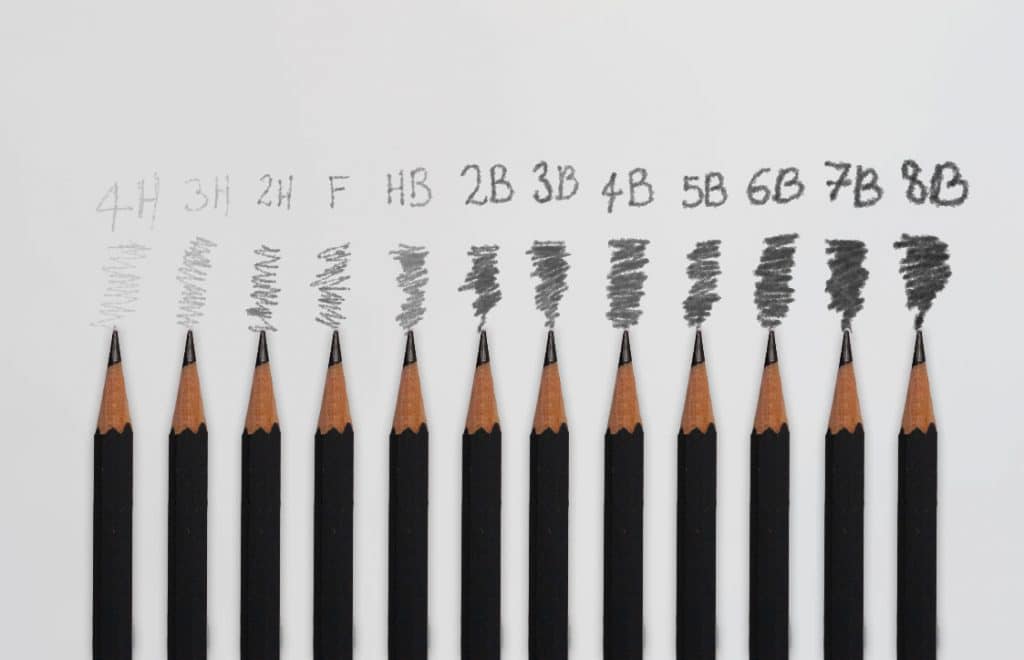
A soft pencil, like 6B or 8B would be perfect for techniques like shading, blending and making areas of a drawing appear darker in value. They especially lend themselves to realism drawing, as depending on the amount of pressure applied, you can create varying degrees of darkness and shadow.
Hard pencils like 4H will make crisp, light lines. This makes them perfect for technical drawings—a 3H would be more useful to an architect than a 9B. As the pencil is hard, you can only really use them by applying light pressure to the surface, or you could damage the paper.
Soft pencils wear down quickly, if you use them fairly often you may have to replace them after a shorter amount of time compared to a hard pencil. You’ll find yourself reaching for the sharpener much more often.
A 2H pencil would be useful for any avid pencil artist—sketch out a composition without worrying too much about having dark lines to erase. If you choose, you can go over the light lines with a darker pencil.
The best graphite pencils
Quality graphite pencils will give a reliable, smooth, consistent tonal range. Better quality pencils are less prone to breakage and the softer varieties of better quality pencils blend more easily.
Caran d’Ache

This is the luxury option on the list, the graphite line pencils are made from extra fine graphite and the wood casing is varnished in a colour that depicts the hardness and depth of the black. The pencils have a good lightfast rating, which means they won’t fade over time. They have a silver tone and velvet finish.
Faber-Castell 9000 series
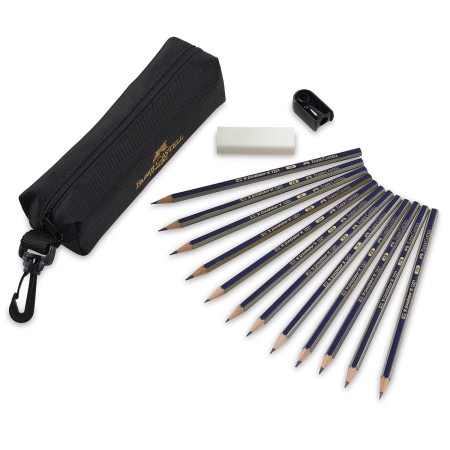
Another professional quality graphite pencil, however these are slightly cheaper. The tips are resistant to breakage and are made with smooth graphite.
Koh-I-Noor woodless graphite pencils
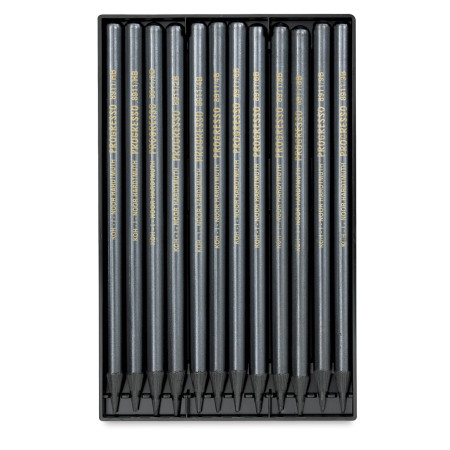
These pencils have a lacquered coating, rather than being encased in wood. These are great if you want to create thicker lines.
Graphite powder

Dry brush this powder onto your paper to get smooth blends and create deep shadows. It’s a dry medium, but bridges the gap between painting and drawing. Use this medium to add unique texture to your artwork.
Graphite putty
Kneadable graphite is soft, malleable putty that encourages expression. It can be modelled into interesting shapes to create a variety of effects. It’s also water soluble, which gives the artist the ability to create dark marks on paper.
The best graphite drawing set
A professional drawing set, beautifully presented and containing all the different kinds of pencils an artist could need. The quality of Swiss made Caran d’Ache Pencils are unparalleled.
Water soluble graphite
Water soluble graphite is pretty versatile—use it to enhance watercolour sketches, or in regular graphite drawings. They have the appearance of graphite but when water is added, you can create smooth tonal transitions. Create washes much like you would with watercolour pencils.
Mechanical pencils
Mechanical pencil cores are usually made from graphite in HB (medium hardness). The advantage of a mechanical pencil is that the graphite maintains its sharpness.
So with it being sharp and relatively hard, it suits technical drawings, precise lines and preliminary sketches for paintings. Sketch lightly with these pencils and the lines will be easy to rub out. Mechanical pencils won’t be the best choice if you want to do lots of shading, but for line work they are perfect.
Charcoal pencils
Charcoal is made by heating wood such as willow. The drawing material is made from carbon remains. It’s lightweight and can be used to create dark, bold strokes. The results of a charcoal drawing can look expressive, however, if you press lightly with charcoal you can achieve delicate looking lines too. Smudge and blend charcoal, or spray with a fixative to keep layers in place.
Best charcoal pencil

Faber-Castell Pitt Charcoal: Buy here
Available in soft, medium and hard, charcoal pencils are easy and clean to hold. They have the same properties of charcoal sticks, but in a useful pencil shape, meaning that they can be sharpened to create finer points.
Best charcoal sticks
Winsor & Newton willow charcoal sticks: Buy here
These charcoal sticks have been heated evenly to give smooth and consistent results when drawing. Charcoal is brilliant for creating underdrawings in paintings and for indelible mark making.
Coloured pencils
Coloured pencils are simply pigment carried in various binders and encased in wood. There are several different options for artists when it comes to coloured pencils, whether you choose oil, watercolour or pastel coloured pencils will depend upon the effects you want to achieve.
Oil based coloured pencil
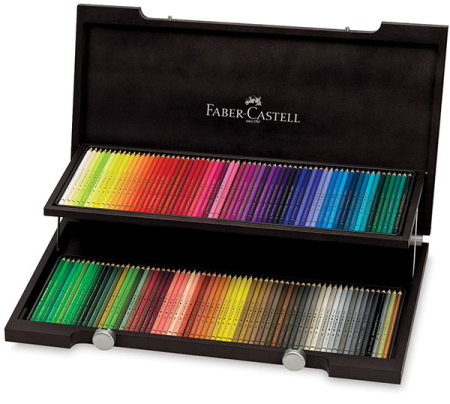
Buy Faber-Castell Polychromos oil pencils
Oil pencils are brilliant for layering and creating highly vivid, realistic works. They are oil based and contain a mix of linseed oil and a small amount of wax with pigment.
They can be thinned with solvent too to emulate oil paints or make washes. Oil pencils can be blended, mixed and layered in a similar way to oil pastels.
Use the pencils on oil paper, pastel mat, gesso board, a primed wooden panel or any surface with a slight ‘tooth’ (surface texture) for optimum layering effects. Many artists that have a hyper-realistic style enjoy using oil pencils for the control and level of detail they can achieve. By building up layers of an oil pencil drawing, the finished result can resemble a painting.
Choose to use these under oil paints to sketch out your work or as a medium in their own right. Oil pencils are harder to erase than other types of pencils, however it is still possible to rub out lines. Draw lightly to rub out marks more easily.
Coloured pencils made from oil are resistant to breakage, the nib will stay intact for even the most heavy techniques. Oil pencils can be layered on top of other mediums like marker, watercolour and gouache.
Pastel pencil—wax based coloured pencil
Pastel pencils are wax based and are softer than oil pencils. Blend, layer and mix wax pencils the same as you would with oil pencils or pastels. They are much easier to erase than oil pencils. Nibs are more prone to breakage than oil pencils because they are softer; they will wear down quicker and need sharpening more often.
Wax based pencils can create a waxy film or ‘wax bloom’. This is where the build up of wax creates a slight sheen. Artists can fix this by wiping their drawing with a slightly damp cloth to remove the bloom.
Wax and oil drawings look similar in appearance, however wax pencils are slightly cheaper.
Blending with solvent is best used with oil pencils rather than wax pencils, to blend with wax pencils, use a colourless blender.
Watercolour pencil
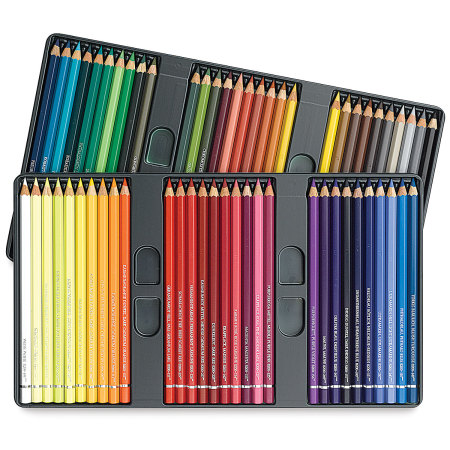
Faber-Castell watercolour pencils: Buy here
Watercolour pencils are completely different to wax and oil pencils in that they are water soluble.
Use these alongside your watercolour paints to achieve fine detail, or use them on their own. You don’t have to add water to watercolour pencils, but by adding water on top of your drawing, you can get some more diverse effects.
When used as a dry media, they can be blended like regular colouring pencils, they are great for beginners due to their versatility.
Using watercolour pencil can actually be a great way to ease yourself into experimenting with the watercolour medium. If it feels more natural for you to draw with a pencil rather than a brush, you can complete your artwork then add water afterwards in a more controlled way.
Colours intensify with the addition of water, they become much more bright and saturated. These pencils are a great option for livening up some line work, an illustration or for travelling, as painting with watercolour paints outside can get messy. To use with a brush, apply the watercolour pencil to the paper first, wet a brush, then paint over the coloured areas. Alternatively, you could wet the paper, then draw over with pencil and see the pigment spread. Another way to use them is to dip the pencil in water to create bold marks on paper.
Metal Point pencil

Metal point is a traditional medium that dates back to the Medieval times. Leonardo Da Vinci used silverpoint to create many of his famous drawings.

Various types of soft metals can be used as a pencil medium, lead is the easiest to use, as it doesn’t require the surface preparation that silver and gold does. However lead is associated with adverse health effects and isn’t as widely used today.
Silverpoint
A silver rod is trailed across an abrasive surface, a silver point ground should be applied to the surface, for optimum results. Ground is easy to apply, you only need one layer, it’s made from self levelling liquid that you brush onto paper.
The marks silver point makes are faint and shine in the light. Silver is permanent, lightfast and won’t smudge. Wire is held in a pencil shaped ‘clutch’ casing for ease of use.
It takes time to build up tone in a drawing with silver or gold, as the marks made are so faint.
Goldpoint
Marks made with gold are even fainter than silver, but it makes a good medium to sketch out composition before starting to establish tone in a drawing.
A 9 carat gold wire fits in a pencil clutch. Gold is softer than silver and it maintains its colour over time. Silver will tarnish and change colour slightly.
Read this book for more information about metal point drawing.
Other supplies for pencil art
Extra supplies can help you to master specific techniques, effects and achieve polished looking drawings.
Best pencil erasers
Kneaded eraser
These erasers can be moulded like putty. Shape the end to a point to erase small areas. Kneaded erasers are much softer than regular erasers so you can remove layers of a drawing at a time to create highlights.
Fine point eraser
Erase precise details with this small pointed eraser. It can be held like a pencil for precision.
Sharpener
A good pencil sharpener will keep your pencils in great condition—get a blade that can sharpen pencils to a swordfish point so that pencils last for longer. It will sharpen the wood around the core, emulating the effect sharpening with a knife can give.
Paper
A paper’s texture can affect how a drawing looks.
For example, if the paper is smooth and thick, you will be able to achieve fine detail. Thick paper is more durable and would be able to withstand gestural techniques and erasing.
I’ll run through some of the types paper you could use with your choice of pencil media to get the best results. For a more detailed look at types of paper for drawing, read our review on the best drawing papers.
Bristol Board
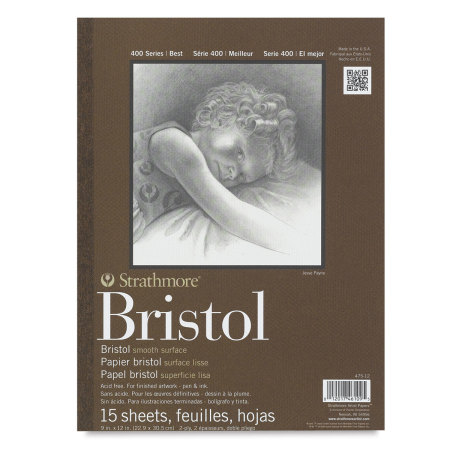
Extra smooth paper. A great option for graphite drawing and illustrative styles. If you are a professional artist and need to scan artwork to make prints, or publish online, then Bristol board would give a clean scan due to the lack of texture.
Papers that are slightly more rough in texture are better for blending, however. Plus, while you can of course use Bristol board with all types of pencil, in order to build layers with colouring pencils you would need a thicker more abrasive paper. Watercolour pencils can be used dry, but I wouldn’t advise wetting Bristol Board as the paper could warp and buckle.
Pastel mat
Thick paper with an abrasive texture. Use this with pastel pencil or oil pencil to achieve layered drawings.
Watercolour paper
This is the most suitable type of paper to use with watercolour pencils. The thickness, durability and absorbency of the paper can handle washes of water thinned pigment.
Museum Board
This 100% cotton fibre board is archival quality so can be used in professional applications. The board is acid-free, so the appearance won’t degrade over time. Museum board can be used with charcoal, pastel pencil and even watercolour pencil (if you use very light washes). Andy Warhol used this paper for his silkscreen printing.
Blending stubs
Blending stubs and tortillions are tightly rolled pieces of paper which can be used to blend charcoal, wax or oil pencil. Tortillions are sharper than blending stubs so are more suited to blending smaller areas. They can become discoloured quickly, but you can clean them by buffing with sandpaper.
Fixative
Prevent a finished drawing from smudging by spraying with fixative. Different fixatives should be used for oil pencil and graphite. However, I’ve linked to a universal fixative above that can be used with coloured pencils, charcoal and graphite.
Fixatives can be applied between layers as well as at the end of a drawing. Make sure your space has adequate ventilation before spraying fixative.
Pencil lengthener
Get the most out of a used pencil stub by attaching a pencil lengthener.
I bet you didn’t know you could get so many pencil art supplies! If you love buying art supplies, then maybe more than a few of these will tempt you. Let me know in the comments which pencil supplies you want to experiment with next. If you want to read a more comprehensive guide on the best drawing tools for artists, check out our guide.
Best pencils for artists: Pin it!
If you’ve found anything on this site especially useful, you can make a donation to me through PayPal. I take a lot of time to research and write each topic, making sure each tutorial is as detailed as possible and I make all my content freely available. Any small donation (even the price of a cup of coffee!) can help me to cover the running costs of the site. Any help from my readers is much appreciated :).
Follow the link in the button below to support this site.


Hi! Someone in my Facebook group shared this website with us so I came to give it a look.
I’m definitely enjoying the information. I’m book-marking and
will be tweeting this to my followers! Terrific blog and outstanding design and style.